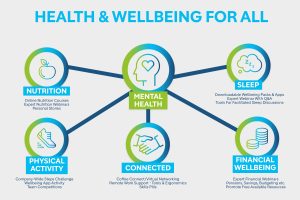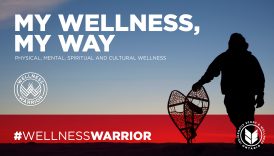The Holistic Approach to Wellness: A Comprehensive Guide

What is Holistic Wellness?
Holistic wellness is an approach that considers the whole person, encompassing physical, mental, emotional, social, spiritual, and environmental dimensions. Unlike traditional methods that focus solely on symptoms or specific parts of the body, holistic wellness emphasizes the interconnectedness of these aspects. For instance, someone might feel physically unwell due to stress at work, illustrating how mental health can impact physical health. This comprehensive view encourages individuals to foster wellness in all areas of life. It invites exploration and practices that promote overall well-being, such as balanced nutrition, regular exercise, mindfulness practices, and nurturing relationships.
- The Holistic Approach to Wellness: A Comprehensive Guide
- What is Holistic Wellness?
- Importance of Holistic Approach
- Physical Wellness
- Nutrition and Diet
- Exercise and Movement
- Mental Wellness
- Stress Management
- Emotional Well-being
- Spiritual Wellness
- Meditation and Mindfulness
- Connecting with Nature
- Social Wellness
- Building Healthy Relationships
- Community Engagement
- Environmental Wellness
- Sustainable Living Practices
- Creating a Healthy Home
- Occupational Wellness
- Work-Life Balance
- Professional Development
- Financial Wellness
- Budgeting and Saving
- Investments and Planning
Importance of Holistic Approach
Adopting a holistic approach to wellness can lead to profound improvements in quality of life. Here’s why it matters:
- Interconnectedness: Each aspect of wellness influences the others; addressing one can improve all.
- Prevention: Focus on holistic wellness can aid in preventing health issues before they escalate.
- Sustainable Change: It promotes lasting lifestyle changes instead of quick fixes.
- Personal Empowerment: Individuals gain agency in their health by recognizing that they have the tools to influence their well-being.
By understanding and implementing holistic wellness, individuals embark on a transformative journey towards a healthier, more balanced life.
Physical Wellness
Nutrition and Diet
Nutrition plays a vital role in physical wellness, acting as the foundation for energy, vitality, and overall health. A well-balanced diet fuels the body and supports various bodily functions. For instance, after switching to a whole-foods-based diet rich in fruits, vegetables, and lean proteins, many individuals report increased energy levels and improved mood. Here are a few tips for enhancing nutritional wellness:
- Choose Whole Foods: Focus on unprocessed foods to maximize nutrient intake.
- Stay Hydrated: Aim for at least eight glasses of water a day.
- Balance Your Plate: Include a variety of food groups—carbs, proteins, and fats.
Exercise and Movement
In addition to nutrition, regular exercise is key to maintaining physical wellness. Engaging in physical activity not only helps manage weight but also boosts mental and emotional health. For example, taking up running or joining a dance class can transform a sedentary lifestyle into a more active one. To integrate exercise into daily life, consider these strategies:
- Set Realistic Goals: Start with achievable targets, such as a 30-minute walk three times a week.
- Find Activities You Enjoy: Whether it’s swimming, yoga, or hiking, enjoying your exercise routine makes it easier to stay consistent.
- Make It Social: Exercising with friends or family can boost motivation and make workouts more enjoyable.
Combining mindful eating practices with regular physical activity creates a robust foundation for physical wellness that supports overall holistic health.
Mental Wellness
Stress Management
Mental wellness is a cornerstone of overall health, and managing stress is one of its most critical components. Stress can manifest in various forms—be it from work, relationships, or financial pressures—and if left unchecked, it can lead to serious health issues. Many individuals find that incorporating stress management techniques, like mindfulness and meditation, can dramatically improve their mental state. Here are some effective strategies for managing stress:
- Practice Mindfulness: Spend a few minutes each day focusing on your breath and being present in the moment.
- Time Management: Prioritize tasks and break projects into smaller, manageable steps to avoid feeling overwhelmed.
- Engage in Hobbies: Take time to pursue interests that bring you joy, whether it’s reading, gardening, or painting.
Emotional Well-being
Equally important is nurturing emotional well-being. Positive emotional health allows individuals to navigate life’s challenges with resilience. Sharing experiences with friends or journaling can be helpful. Key tips for enhancing emotional well-being include:
- Develop Self-Compassion: Treat yourself with kindness, especially during tough times.
- Establish Supportive Relationships: Surround yourself with people who uplift and encourage you.
- Seek Professional Help: Don’t hesitate to consult a therapist or counselor for support.
By prioritizing stress management and emotional well-being, individuals can cultivate a balanced mental landscape that supports an overall sense of wellness.
Spiritual Wellness
Meditation and Mindfulness
Spiritual wellness is about finding purpose, meaning, and connection within oneself and the universe. One of the most effective ways to enhance spiritual wellness is through practices like meditation and mindfulness. These techniques help individuals cultivate a deeper understanding of themselves and promote a sense of inner peace. For example, setting aside just ten minutes each day for meditation can lead to noticeable changes in mental clarity and emotional stability. Some practical steps include:
- Focus on Your Breath: Concentrate on inhaling and exhaling to anchor yourself in the present.
- Guided Meditations: Use apps or online videos for structured meditation sessions.
- Create a Sacred Space: Designate a peaceful area in your home to practice meditation regularly.
Connecting with Nature
Another powerful pathway to spiritual wellness is connecting with nature. Spending time outdoors can evoke feelings of awe and appreciation, reminding us of our place in the world. For instance, a simple hike in the woods or a quiet moment by a lake can rejuvenate the spirit. Tips for connecting with nature include:
- Nature Walks: Dedicate time each week to explore local parks or trails.
- Mindful Observation: Pay attention to the sights, sounds, and smells of the environment to deepen your connection.
- Nature Journaling: Document your experiences and reflections in a journal while you spend time outdoors.
By embracing meditation and nature, individuals can foster spiritual wellness that enriches all aspects of their lives.
Social Wellness
Building Healthy Relationships
Social wellness is pivotal in creating a fulfilling life. It revolves around building and maintaining healthy relationships with others. Strong connections can provide support during difficult times and enhance overall happiness. Reflecting on personal experiences, individuals often find that investing time in relationships—whether with family, friends, or colleagues—can lead to deeper bonds and improved well-being. To foster healthy relationships, consider these tips:
- Open Communication: Be honest and transparent with your feelings and needs.
- Active Listening: Show genuine interest in what others say to build trust and understanding.
- Quality Time: Schedule regular catch-ups or activities that both parties enjoy.
Community Engagement
Engaging with the community is another essential aspect of social wellness. It allows individuals to contribute to something greater than themselves and fosters a sense of belonging. Volunteering, attending community events, or joining clubs can provide opportunities for connection and purpose. Here are some ways to become more involved in your community:
- Volunteer: Find local organizations that resonate with your passions and dedicate some time.
- Attend Local Events: Participate in workshops, festivals, or meetups to meet new people.
- Join Interest Groups: Connect with others who share your interests, whether it’s sports, art, or book clubs.
By prioritizing healthy relationships and community engagement, individuals can cultivate a richer social fabric that enhances their overall sense of wellness.
Environmental Wellness
Sustainable Living Practices
Environmental wellness relates to our connection to the world around us, emphasizing the importance of caring for the planet. Adopting sustainable living practices not only promotes a healthier environment but also enhances personal well-being. When individuals make eco-friendly choices, they contribute to a cleaner planet while often feeling a sense of fulfillment from their efforts. Here are some practical steps for embracing sustainable living:
- Reduce, Reuse, Recycle: Strive to minimize waste by opting for reusable items and recycling materials whenever possible.
- Choose Local: Purchase food and products from local farmers and artisans to support the community while reducing your carbon footprint.
- Conserve Energy: Implement simple changes like turning off lights or using energy-efficient appliances.
Creating a Healthy Home
Creating a healthy home environment is fundamental to environmental wellness. A nurturing living space not only improves physical health but also enhances emotional well-being. To cultivate a healthier home:
- Declutter: Remove items you no longer need to create a calming space.
- Natural Light and Air: Open windows and let sunlight in to improve air quality and mood.
- Indoor Plants: Incorporating plants can purify the air and add a touch of nature indoors.
By embracing sustainable living practices and fostering a healthy home, individuals can significantly contribute to their own environmental wellness while enhancing their overall quality of life.
Occupational Wellness
Work-Life Balance
Occupational wellness is a vital aspect of overall health, centering on how individuals find satisfaction and fulfillment in their jobs. One of the most significant parts of this wellness is achieving a healthy work-life balance. Striking the right balance can lead to increased job satisfaction, reduced stress, and improved personal relationships. To foster a better work-life balance, consider these strategies:
- Set Boundaries: Communicate your working hours clearly to colleagues and family.
- Prioritize Tasks: Use techniques like the Eisenhower Box to categorize tasks based on urgency and importance.
- Take Breaks: Schedule regular breaks during work to recharge and avoid burnout.
Professional Development
Another essential element of occupational wellness is ongoing professional development. Engaging in learning opportunities can lead to career advancement and renewed motivation. For instance, attending workshops or pursuing further education can enrich one’s skill set and make work more enjoyable. To enhance professional growth, consider:
- Networking: Build connections within your industry to explore new opportunities.
- Set Goals: Identify long-term career goals and break them into actionable steps.
- Seek Feedback: Ask for constructive feedback from colleagues or supervisors to improve performance.
By prioritizing work-life balance and professional development, individuals can cultivate a fulfilling occupational wellness that supports their overall well-being.
Financial Wellness
Budgeting and Saving
Financial wellness goes hand in hand with overall health, as managing one’s finances can significantly reduce stress and increase peace of mind. Budgeting is a foundational aspect of financial wellness, helping individuals track their income and expenses. For example, when one family started budgeting, they discovered they could save hundreds monthly simply by cutting down on dining out. To establish a solid budgeting framework, consider these steps:
- Create a Monthly Budget: List all sources of income and categorize expenses (fixed, variable, and discretionary).
- Use Budgeting Apps: Leverage technology with apps like Mint or YNAB that provide real-time tracking.
- Set Savings Goals: Aim to save at least 20% of your income each month for emergencies and future needs.
Investments and Planning
Once budgeting is in place, focusing on investments and financial planning becomes essential. Investing enables individuals to grow wealth over time, providing financial security for the future. Sharing a personal anecdote, many people who began investing early, even with small amounts, found themselves surprised at how compounding interest worked in their favor over the years. To enhance your investment strategy:
- Diversify Assets: Spread investments across various asset classes to mitigate risk.
- Educate Yourself: Take time to learn about stocks, bonds, and mutual funds through books or online courses.
- Consult a Financial Advisor: Consider professional guidance for tailored financial planning and investment strategies.
By prioritizing budgeting, saving, and wise investments, individuals can establish a sense of financial wellness that supports their overall well-being and future aspirations.





